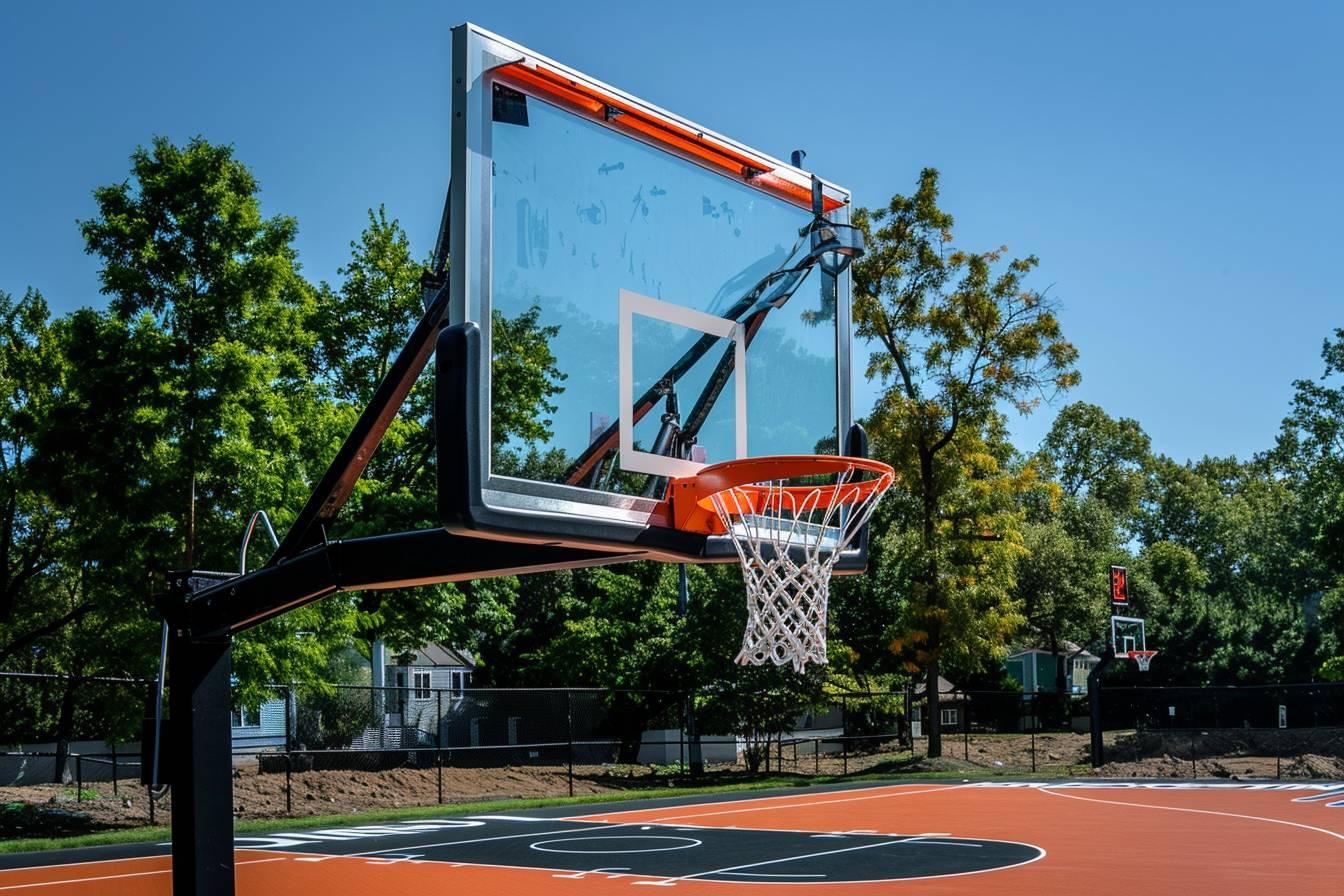🤸 To sum up :
The NBA basketball hoop height has remained at 10 feet for over a century, influencing game strategy and player development. Here’s a brief overview :
- Historical significance : Set by Dr. James Naismith in 1891, adopted by the NBA in 1946
- Player impact : Shapes shooting techniques, vertical leap training, and defensive strategies
- Youth development : Adjusted heights for different age groups promote proper skill progression
- Ongoing debate : Some argue for raising the hoop, but the NBA maintains the standard for tradition and fan experience
The standard height of an NBA basketball hoop has remained unchanged for over a century, serving as a fundamental aspect of the game’s design and strategy. As fitness enthusiasts and sports aficionados, we’re fascinated by the precision and history behind this crucial element of basketball. Let’s dive into the details of NBA hoop heights and explore their significance in the sport we love. 🏀
The historical evolution of basketball hoop height
The story of basketball’s iconic 10-foot hoop height begins with the sport’s inventor, Dr. James Naismith, in 1891. As a physical education instructor at the International YMCA Training School in Springfield, Massachusetts, Naismith was tasked with creating an indoor game to keep students active during harsh New England winters. 🌨️
In a stroke of genius, Naismith hung two peach baskets at the height of 10 feet (3.05 meters) on the running track of the gymnasium. This decision was largely pragmatic, as the railing of the track happened to be at that height. Little did he know that this arbitrary choice would become a lasting standard in the sport.
Over the years, as basketball evolved from a simple pastime to a global phenomenon, the 10-foot hoop height remained constant. The National Basketball Association (NBA), founded in 1946, adopted this standard, cementing its place in professional basketball. Despite significant changes in other aspects of the game, such as player size and skill level, the hoop height has stood the test of time.
As perfectionists in our approach to sports, we appreciate the consistency this standard provides across all levels of play. From middle school gyms to the grand arenas of the NBA, players can count on facing the same vertical challenge. This uniformity has played a crucial role in preserving the integrity and tradition of basketball.
Impact of hoop height on player development and game strategy
The 10-foot hoop height has a profound impact on how basketball is played and how players develop their skills. As coaches, we’ve observed how this standard influences various aspects of the game :
- Shooting technique : Players must perfect their arc and release to consistently make baskets at this height.
- Vertical leap training : The need to reach the rim for dunks and blocks drives players to improve their jumping ability.
- Defensive strategies : Shot-blocking and rebounding techniques are tailored to the specific challenges posed by the 10-foot rim.
- Offensive plays : Alley-oops and other aerial maneuvers are designed with this exact height in mind.
Interestingly, the NBA has maintained this height despite the increasing average height of players over the decades. In 1952, the average NBA player stood at 6’4″ (1.93 m), while today, that figure has risen to nearly 6’7″ (2.01 m). This consistency in hoop height, contrasted with the evolution of player physiques, has led to some fascinating changes in gameplay and athleticism. 📏
From a technical standpoint, it’s worth noting that NBA regulation rims have an 18-inch (45.7 cm) inner diameter, and the backboards measure 72 inches (183 cm) wide by 48 inches (122 cm) tall. These precise measurements contribute to the overall challenge and skill required in the sport.

Variations for different age groups and skill levels
While the 10-foot standard is universal for adult play, basketball organizations recognize the need for adjusted heights in youth development. As coaches committed to nurturing young talent, we appreciate the thoughtful approach to scaling the game for different age groups :
| Age Group | Recommended Hoop Height |
|---|---|
| 5-6 years | 6-7 feet (1.83-2.13 m) |
| 7-8 years | 8 feet (2.44 m) |
| 9-11 years | 9 feet (2.74 m) |
| 12 years and older | 10 feet (3.05 m) – Regulation height |
These graduated heights allow young players to develop proper shooting form and experience success without being discouraged by an unreachable target. As children grow and their skills improve, the progressive increase in hoop height challenges them appropriately. 🏀💪
Adjustable basketball hoops have become popular for home use, enabling families to modify the height as children grow. This flexibility supports long-term player development and keeps the game enjoyable for all skill levels.
The ongoing debate : Should the NBA raise the hoop ?
As the average height and athleticism of NBA players continue to increase, some basketball enthusiasts and analysts have proposed raising the hoop height to 11 or even 12 feet. Proponents argue that this change could :
- Increase the importance of mid-range and long-distance shooting
- Reduce the dominance of dunking in the game
- Create new challenges for players and potentially lead to new skill developments
However, the NBA has consistently rejected these proposals, citing several reasons :
- Tradition and global standardization : Changing the hoop height would disrupt the continuity of basketball records and require a massive overhaul of facilities worldwide.
- Player safety concerns : A higher rim could lead to more dangerous falls and injuries during attempted dunks or rebounds.
- Fan experience : The current height allows for spectacular plays that fans love, such as alley-oops and emphatic dunks.
As technical precision enthusiasts, we can appreciate both sides of this debate. While innovation can drive sports forward, there’s also value in maintaining established standards that have shaped the game for generations. 🤔
In our view, the 10-foot hoop height strikes a delicate balance between accessibility and challenge. It allows players of various heights and skill levels to compete on a level playing field while still providing ample room for athletic feats that captivate audiences worldwide.
As we look to the future of basketball, it’s clear that the iconic 10-foot hoop will continue to be a defining feature of the sport. Whether you’re shooting hoops in your driveway or watching the NBA Finals, that familiar rim height will remain a constant, challenging players and thrilling fans for generations to come. 🏆



